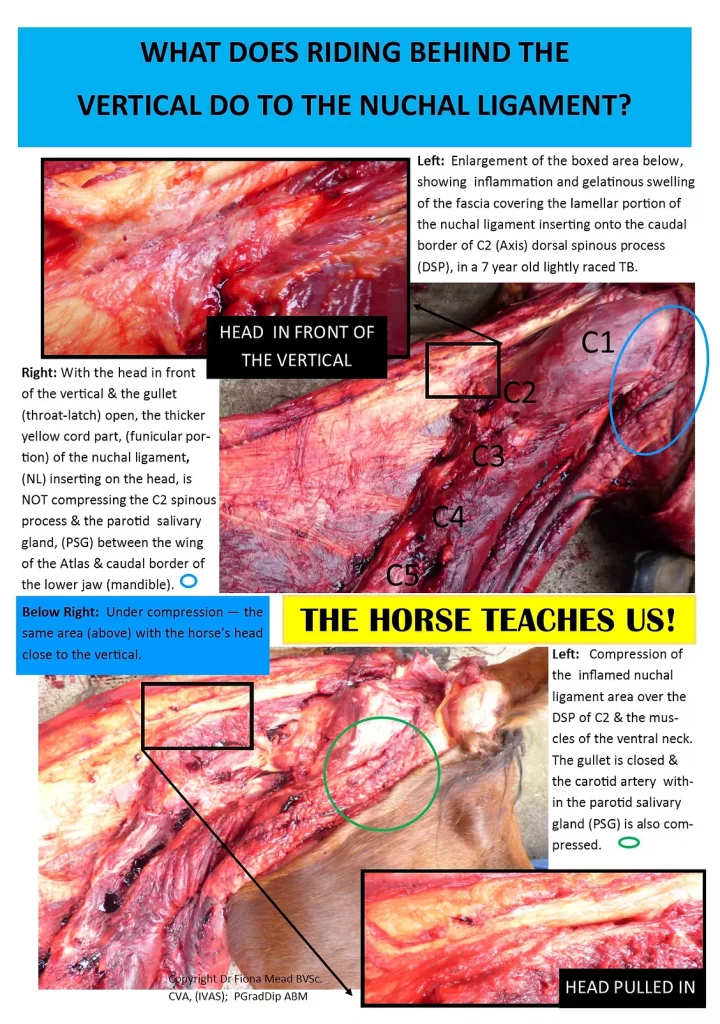For many horses and modern training systems, riding during warm up or indeed during FEI dressage tests, having the horse’s head on the vertical or behind the vertical has become standard riding practice. Supposedly reflecting a horse that is in ‘collection’ and ‘on the bit’, the head placement for many is the goal in ‘looking the part’ of the professional dressage rider. Idolising those winning the ribbons by young ‘wanna be’s’ is not enhancing the profession, nor the longevity of the horses’ ridden life.
In a recent dissection of a 7 year old lightly raced thoroughbred, who had had 8 starts and been head strong, with body issues that meant he had not been an easy ride, the effect of behind the vertical riding was HIGHLIGHTED. The owner had retired him because he had not looked comfortable ridden and was consistently pulled in, and tried to be controlled by his head placement.
The following photos show the damage that was still evident to the nuchal ligament of this horse, despite not having been ridden for the last 2 years. In fact, this horse, shows us the detriment it is indeed having on their bodies. The fact that the issues were still evident some years later highlights the fact that how we start and train horses has a continued and long term impact on their bodies and longevity for riding.
The owner of this particular horse was responsible enough to not sell the horse on, as a difficult off the track thoroughbred, in need of re-schooling. For me, it highlights the fact that as riders, trainers and bodyworkers, we need to be aware of the impact our training systems have and the lack of lasting effect our bodywork or ‘paddock rest’ can have in some situations.
Some horses are not meant to be ridden, they tell us LOUD & CLEARLY, but sometimes we persist and even ignore their pleas. It is time the FEI and other equine industries stood up for what is RIGHT for the horse… they are the ones that tell us if the training and riding we are doing is right for them! When will we change our systems and RULES to reflect their NEEDS?


